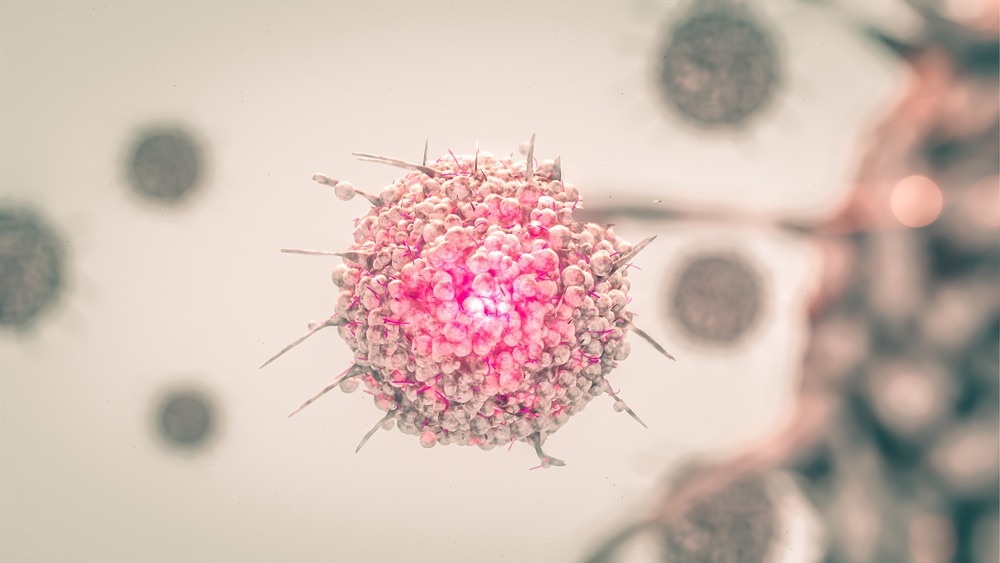Recent research published in the journal eLife proposes a theory for how cancer cells might actively adapt to the immune system to become resistant to immunotherapy.

Image Credit: CI Photos/Shutterstock.com
As a population of cancer cells changes and adapts in response to being recognized and eliminated by the immune system, immune recognition, and environmental variables dictate the difficulty with which a future disease can be targeted with different treatments.
Immunotherapies (treatments that use the body’s own immune system to fight cancer) hold the promise of longer-term remission. By targeting tumor-associated antigens (TAAs), which are molecular “flags” on the surface of tumor cells, it is feasible to warn the body’s immune system of their presence—possibly for many years.
However, just as tumors develop compensatory mechanisms to adjust to chemotherapy, cancer cells might develop strategies to avoid detection by the immune system. However, while medication resistance may pose a challenge for traditional therapies when cancer cells evolve to avoid immune recognition, they lose and gain TAAs, and these new antigens may be targeted by new immunotherapies.
It had previously been assumed that cancer cells adapt to being recognized by the immune system in a passive way, rather than sensing the surrounding immune environment and actively adapting.”
Jason George, Study Co-Author and Assistant Professor, Department of Biomedical Engineering, Texas A&M University
Jason George adds, “However, previous experiments have demonstrated that the level of cancer evasion can be fine-tuned by malignant cells sensing environmental and immunological stresses. In responding to stress, cancer cells can adapt by picking up mutations and by altering the level of otherwise rare proteins, for example, to survive. This can lead to changes in the antigen signatures present on cancer cells that the immune system is able to recognize, and tracking these modifications could reveal new vulnerabilities that can be therapeutically targeted.”
While being monitored by the human immune system, cancer cells are either eliminated, escape the immune system, or attain an equilibrium—where cancer coexists with the immune system over a long period of time. All of these effects are determined by a complex interaction between immune recognition and cancer evolution, and the impacts of a cancer adaptive evasion strategy on subsequent disease progression are largely unknown.
To overcome this, the researchers created a mathematical model that quantifies the aggressiveness of a cancer cell population’s evolutionary strategy when confronted with various immune environments.
Tumor Evasion via Adaptive Antigen Loss (TEAL) is a model that consists of a population of cancer cells that are targeted over time by a recognizing system, i.e., the immune system. If cancer cells use a passive strategy, the cancer population’s rate of evasion of the immune system does not change over time.
However, in an active evasion strategy, the cancer population knows critical information, such as the number of TAAs it has and the extent to which immune cells actively attack TAAs, and bases its strategy on these insights.
The researchers mathematically modeled and solved for the dynamical behavior of both strategies—passive and active evasion tactics—and then evaluated them with various immune environments over time, ranging from a hostile immune environment with a large number of immune cells identifying all TAAs to a less hostile environment with fewer cells identifying the TAAs.
Cancer cell populations that use an active evasion strategy surpass their passive counterparts, greatly boosting the frequency with which cancer populations eventually escape the immune system, as predicted by scientists. However, despite evading immunity, these populations paid a price in the form of an increased number of mutations and/or transcriptional changes, which influence the overall TAA profile of the cell population.
The model also predicted that cancer cells in a tumor-promoting immune environment would become unstable as they gained and lost TAAs, which could explain why solid tumors frequently have “hot” and “cold” regions that are sensitive or unresponsive to immunotherapy.
Actively adapting cancers are by design more difficult to treat. But our model predicts that in some cases, the cancer populations pay a penalty for surviving against immune recognition today that may then be therapeutically targeted tomorrow. This early work motivates an intriguing research direction for identifying optimal therapeutic strategies against adaptive or ‘smart’ diseases like cancer, and they will no doubt benefit from mathematical modeling.”
Jason George, Study Co-Author and Assistant Professor, Department of Biomedical Engineering, Texas A&M University
The model gives vital insights that the authors believe will be critical in realizing immunotherapy’s potential for keeping individual patients’ tumors at bay for many years.
Defeating a highly adaptive cancer population has provided a persistent challenge to researchers and clinicians. Progress will be enabled by fundamental discoveries on cancer behavior, and by concomitant additional insights into cancer evasion. The possibility that cancer population-level strategies can be smart enough to sense the level of immune recognition threat could have a radical effect on our optimal treatment approach.”
Herbert Levine, Study Co-Author and Adjunct Professor, Bioengineering, Rice University
Herbert Levine is also the Distinguished Professor of Physics and Bioengineering at Northeastern University, Boston, US.
Source:
Journal reference:
George, J. T. & Levine, H. (2023). Optimal cancer evasion in a dynamic immune microenvironment generates diverse post-escape tumor antigenicity profiles. ELife. doi.org/10.7554/eLife.82786.